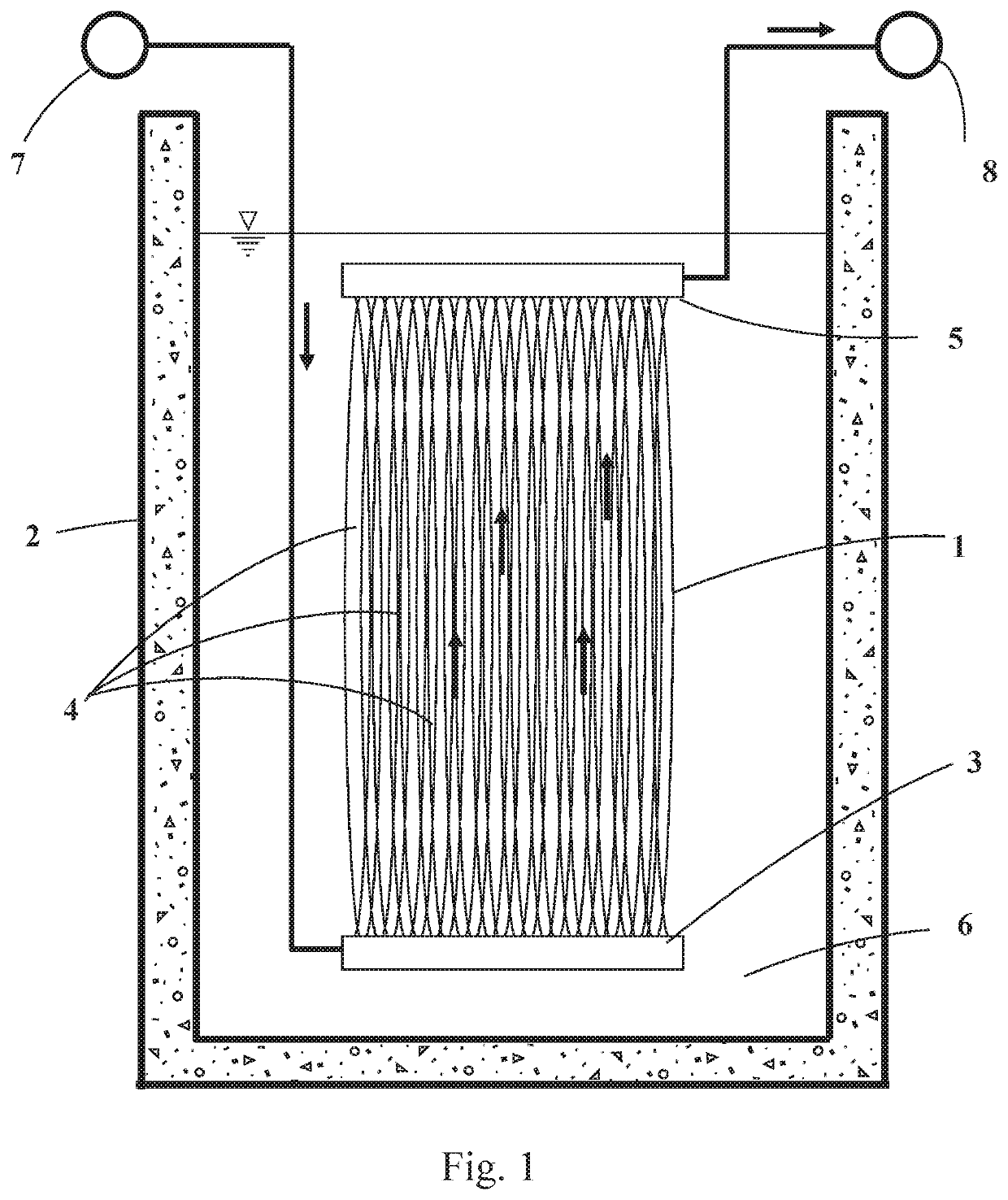Osmotic concentration of produced and process water using hollow fiber membrane
a technology of hollow fiber membrane and water, which is applied in the field of water treatment, can solve the problems of large overall footprint, large interconnection pipework, and reduced salinity of water discharged to the ocean by seawater desalination plants, and achieve the effect of reducing volume, reducing salinity or total dissolved solids (tds) and reducing the salinity of brin
- Summary
- Abstract
- Description
- Claims
- Application Information
AI Technical Summary
Benefits of technology
Problems solved by technology
Method used
Image
Examples
example 1
[0049]The objective in this design example is two-fold: i) reduce the volume of a 50 m3 / h feed stream of produced and process water by 50%, and ii) simultaneously reduce the salinity of a 100 m3 / h thermal desalination plant brine by 25%. 60 osmotic membrane fiber modules are assembled in a frame, each module arranged vertically with its inlet membrane header at the bottom and outlet membrane header at the top, the membrane headers communicating respectively with a feed header and a concentrate header on the frame. Each module comprises 1,500 fiber membranes, each membrane having a length of 1.5 m and an inner lumen diameter of 1 mm.
[0050]A detailed description of how to make the fiber membranes can be found in the Wang article, full details of which are cited above, together with U.S. Pat. No. 8,181,794 (McGinnis et al.). Briefly, the fibers are made of a polyamide membrane separation layer as described in the Wang article on a polyethylene terephthalate support layer on a polypropy...
PUM
| Property | Measurement | Unit |
|---|---|---|
| osmotic pressure | aaaaa | aaaaa |
| length | aaaaa | aaaaa |
| length | aaaaa | aaaaa |
Abstract
Description
Claims
Application Information
 Login to View More
Login to View More - R&D
- Intellectual Property
- Life Sciences
- Materials
- Tech Scout
- Unparalleled Data Quality
- Higher Quality Content
- 60% Fewer Hallucinations
Browse by: Latest US Patents, China's latest patents, Technical Efficacy Thesaurus, Application Domain, Technology Topic, Popular Technical Reports.
© 2025 PatSnap. All rights reserved.Legal|Privacy policy|Modern Slavery Act Transparency Statement|Sitemap|About US| Contact US: help@patsnap.com


